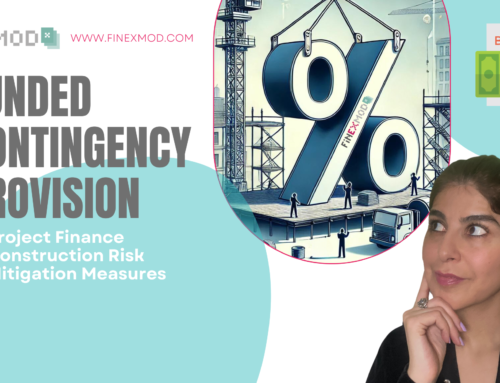Based on FAST financial modeling standards, the four qualities of a standard model are F for Flexibility, A for Appropriate, S for Structure, and T for Transparency.
Although they use the term “Appropriate,” when you read the description, the quality of this standard is closer to correctness and accuracy:
“By focusing on what is necessary for accurate and actionable analysis, FAST models ensure that the outputs are relevant and useful for decision-making. “ (www.Gridlines.com)
I wrote a blog post a while back that I titled: “ Real World Versus the Financial Model”. In it, I talk about staying close to the reality you can envision today, and keeping that vision grounded in reality.
The story of the Base Case
This vision is referred to as the “Base Case.” This is the scenario that we can count on for our decision-making. This is the scenario that everyone believes will happen. That’s the expectation.
But if you’ve ever had the chance to follow a project from the development stage through to operation, you know that most of the time, the base case does not materialize. You can also read the fantastic book “How Big Things Get Done” by Bent Flyvbjerg, and you’ll find horror stories about cost overruns and delays in infrastructure projects.
According to Professor Flyvbjerg we get things done because we love tackling problems as they come.
“We’re good at learning by tinkering, which is fortunate because we’re terrible at getting things right the first time.” From How Big Things Get Done book.
Are we too optimistic in our base cases?
If you understand how lenders think, you’ll see they’re typically more cautious and they’re often the ones leading most of the studies during due diligence. The lender’s base case, which serves as the reference case in loan agreements, is based on a 90% or 99% probability of energy generation from renewable sources, as well as traffic projections for power and transportation projects.
The assumptions underlying the base case are verified by two separate, independent technical consultants, one representing the sponsor and the other representing the lender.
The financial model is audited by a third party to ensure the mechanics are correct but more importantly, that the inputs align with project agreements and supporting studies.
Seems we are doing our best to define a base case that aligns with what experts agree is achievable, but perhaps we don’t place enough emphasis on down cases which, in most project documents, are presented in a single table under sensitivities or scenarios.
Importance of Down Case Scenarios
Of course, the downcases are considered in the agreements, and that’s the whole point of project finance: to mitigate the risks. The problem is not that the risks are not identified.
Once in a lifetime events, like a pandemic, can happen. After the recent Covid crisis, we’ve seen lawyers begin including clauses to address similar situations in future agreements.
Most risks are identified and provisions are in place, but the main issue is that in the base case, these events are not expected to occur. Yet in reality, these provisions are triggered more often than expected.
My Biggest Failure as a Financial Modeler
I worked as the lead financial modeler for a toll road project, and my primary role was to develop a minimum revenue guarantee mechanism. The project was approved and construction was completed. The project even won the best infrastructure award, but later, I heard in the media that the government decided to introduce lower toll rates, which affected the project’s revenues and triggered the minimum revenue guarantee. Who’s fault is it? Everyone involved is to blame, including the firm that conducted the market study and provided us with the level of traffic and tariff for our base case, as well as everyone else who approved it.
F for Flexibility and T for Transparency
That is why I go back to the Flexibility and Transparency rule in financial models. You reflect what all experts are telling you will be the base case, but you also present obvious and bold down-case scenarios and show all parties what will happen when things go sideways. That could be the real meaning of Accuracy: show what is appropriate today but also showcase what happens and what you can do if things are no longer appropriate.


